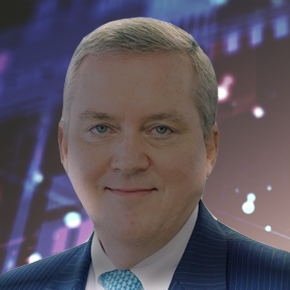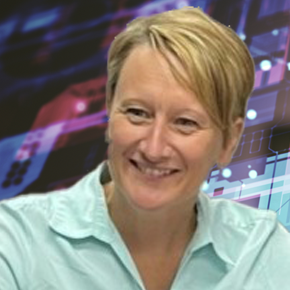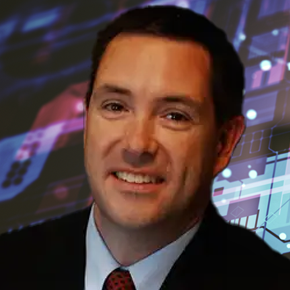April 5, 2024
Change Management in Engineering

Transcript
The Challenge of Change Management in Engineering
One of the most challenging tasks of engineering leaders is to roll out the adoption of a new process or technology. A lot can be said about right and wrong ways to push for change. In this podcast we talk about some of those best practices, and mistakes to avoid when it comes to change management.
But change doesn’t happen in a vacuum. If change is needed in an engineering organization, it also means there are people resistant to change. How can you make the case for change in a way that leads to success? Here to talk about change management in engineering is an experienced change leader. Hank Marcy led Johnson Controls Hitachi Air Conditioning as Vice President of Technology and Innovation, and then as Vice president of Global Product Development. Before that, Hank Marcy was the senior Vice President of Product Design and Engineering at Bissell Inc. and the Vice President of Global Product Technology at the Whirlpool Corporation.
Why do Companies Need to Embrace Change?
Hank Marcy: Think about the tremendous number of changes and types of change that are being thrown at companies pretty much all the time. The Internet has driven massive consumer changes about what consumers expect from products. Then your competition is constantly changing. We have now sustainability becoming an imperative for companies.
I think that change shouldn’t be viewed as something that’s happening to you. Change should be viewed as something that you are participating in and taking advantage of. Because you can’t escape it. So turning it from a problem into a strategy. This is the opportunity for leaders today.
4 Drivers Towards Change in Engineering Today
- Technology innovation
- Consumer expectations
- Increased competition
- Sustainability regulations
Leah Archibald: So the process of designing product now needs to change, not only because the end products need to change, but because the process is changing in a way that companies can’t escape.
Hank Marcy: In product centric companies in particular, the pace of innovation forces you to change how you work. And changing how you work is hard.
Examples of Change Management in Engineering
Leah Archibald: You’ve had particular experience in retail products. I wonder if, looking back at your career at Whirlpool or Johnson Controls, are there specific organizational changes you led or witnessed that had to do with the particular product?
Hank Marcy: There were things we did in both companies that really changed our ability to have the right product for the market at the right time. It came down to embracing modular product architecture. So by architecting your product into modules, you could, for example, focus only on those modules that face the consumer, and change those on a regular basis, and leave the rest of the structure and the underlying function of the product the same. So it feels new, but you haven’t had to take on changing every aspect of the product, which had been the norm for quite a long time.
This was a big change to management. To do modularity, you need to architecture A PLM system, then to manage all the CAD and information about that architecture, and then organize around the architecture to drive ownership and accountability.
I’ll pick a washing machine as an example. So, I have top load washing machines and front load washing machines. Those are two obviously different architectures. On one the drum is horizontal. On the other, the drum is vertical. So that drives different structures, different suspension systems, different motors. So, I have one architecture around front load, and one around top load. But maybe the drive is a belt driven thing in both cases. In that case, I can have one team that works on the drive system for both.
By organizing around the product, I can start to drive accountability, not just for that product, but also across the organization. If we’re going to use water valves in our washing machines and dishwashers and refrigerators, shouldn’t we use the same water valve? And if not, then why not? If you’re doing integrated rather than modular product development, it’s very difficult to ask those questions because you don’t really see the opportunities across products except at a part level. When you can begin to abstract up from a part level to a module level and start reusing modules across products, it becomes very powerful from a productivity perspective. Because you’re just not re-engineering everything. You’re focusing on what you need to change to be successful.
Leah Archibald: Now, tell me about the different players that you have to get on the same page to make a change like this happen across an engineering organization. Who are you convincing? Who’s pushing back? What is the interpersonal dynamic like there? And why is it important.
Hank Marcy: This is where it gets to whether your change succeeds or fails. Are you able to bring people along or not? Have you identified the stakeholders? Have you talked to them? Do they understand what you’re talking about? Do you know why? I think describing the what of the change is always a little bit easy, but the why of the change is how you begin to enroll the hearts and minds of your people. Why am I doing this? Why am I going to go through the effort of learning something new and changing how I work, unless the payoff is really there? I think it’s a leadership imperative to find those stories and to tell the stakeholders why we’re going to change and how it’s going to be so much better when we change.
4 Questions to Ask When Strategizing for Change
- Have you identified the stakeholders?
- Have you talked to them?
- Do they understand the change?
- Do they know the why behind it?
Building a Communication Strategy for Change Management
Leah Archibald: Did you go in with a communication strategy for this initiative?
Hank Marcy: Yeah, absolutely. And it took communicating at multiple levels over and over again. By the time you are bored with it, the people you’re talking to two layers down are just starting to hear it. And so you have to be kind of relentless and persistent.
From a leadership perspective, you’re not accustomed to being repetitive. Repetitive feels somehow not quite right. You’ve been paid to be creative and innovative and dynamic your whole career. But now in the face of a multi-year change, you’ve got to be repetitive because again, people don’t hear it all and they’re not always ready to hear.
Leah Archibald: So in your example of a change initiative around modularity, you had to become a sort of a broken record. Modularity, modularity, modularity.
Hank Marcy: Exactly.
Leah Archibald: This is what we’re doing for modularity.
Hank Marcy: And this is why, and this is how. And if you need help here, here’s where you can go to for help. Set up a forum where people can just ask questions. Why are we doing this? What is the change? What’s the timeline? Who can I talk to when I need help?
4 Questions to Ask the Head of a Change Management Initiative
- Do you know how impactful this change will be on people’s day-to-day workflow?
- Are you providing the support required to allow people to change how they work?
- Are you tracking whether people are adopting?
- If they aren’t adopting, why not?
Put yourself in the place of the people that you are asking to change. Do you have a feeling for how impactful on their day-to-day workflow the change is going to be? And then are you willing to provide the support required to allow people to change how they work? And then, as you’re doing this, you want to be tracking whether people are adopting it. Is it being used the way you wanted it to be? If not, why not? It’s interesting to me, in my own experience, how infrequently I paid attention to all the steps of the emotional side of change.
Leah Archibald: I think the empathy piece is a real challenge, especially when you’re so excited about what a solution can do to speed up your time to market or to increase ROI, it can be hard to dial back to the message for someone in a different position for me who hasn’t already digested this information and who still isn’t on board with the change.
Hank Marcy: Exactly. I remember giving a presentation about change and being very excited, and seeing that quite a few people in the room are excited, but then seeing some people nervously looking down at their feet or shuffling their papers. Talking to them afterwards, they said, “Hank, I understand the change and I understand all the good things it’s going to do. I just don’t see how I can get it done with everything that I have to do. I don’t know how I’m going to create the time to learn this, to change how I work today. I can’t see it.”
If they can’t see how to get from point A to point B, then we haven’t designed the change management process right to allow them to come along. So yeah, I agree with you completely. It’s really hard, but it requires listening.
Leah Archibald: Do you need to go in with a transition plan?
Hank Marcy: I think sometimes yes, sometimes no. In the situations where work content was changing dramatically, we typically would do a pilot approach. So work it out in a real live setting and then go through establishing a few super users who can be the people you can call so that you don’t have to call Hank to get an answer. So you can speak to this colleague in your department or in your function down the hall who has been trained and can really help you work through what it means to incorporate this into your job, with experience that is very high fidelity for you because they’re talking to you about exactly what you do. I like that approach. It tends to build some resiliency in the organization because people can ask and answer questions locally as opposed to having to go back to some central oracle.
Leah Archibald: Well, this has been a great conversation, I have never been more excited to pursue organizational change. Hank Marcy, thank you so much for this conversation.
Hank Marcy: You’re welcome, Leah. I appreciate it.








